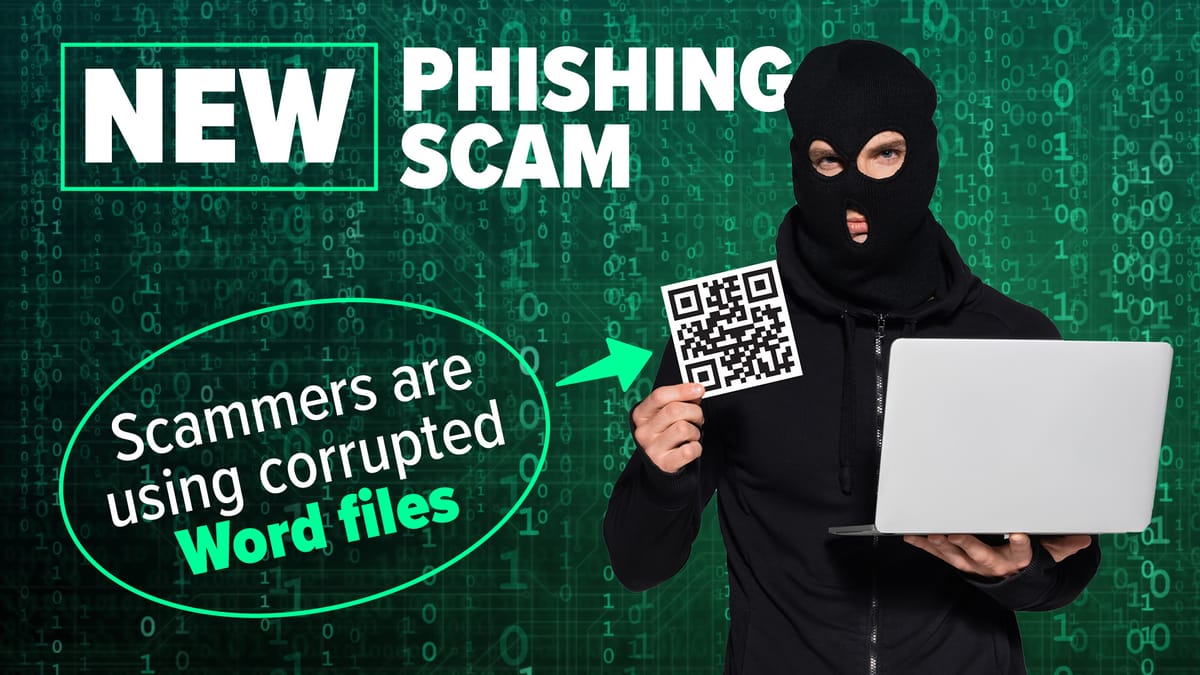Beware of Phishing Scams: The New Microsoft Word Email Attack (And How to Stay Safe)

You’re skimming your inbox and see an email with a Microsoft Word document attached. It looks important—maybe an invoice, a request from a supplier, or a message from a colleague. Without thinking twice, you open it… and just like that, you’ve fallen into a cybercriminal’s trap.
This is exactly what scammers are banking on, and now they’ve developed a new way to bypass even the most advanced email security filters—corrupted Microsoft Word files.
The Rise of Phishing Attacks Using Word Documents
Phishing is one of the most common cyber threats today. It involves scammers impersonating trusted sources to trick you into giving away sensitive information like passwords or financial details. They often send emails with seemingly legitimate attachments or links that, once opened, install malware or direct you to a fake website.
Cybercriminals are getting smarter. Traditional email security filters scan attachments for threats, but corrupted Word files can bypass these scans, sneaking directly into your inbox.
How This New Attack Works
- A phishing email arrives – It appears to be from a legitimate source, such as your bank, a business partner, or even a colleague.
- You open the attachment – The Word file is corrupted, triggering Microsoft Word’s built-in “repair” function.
- A hidden trap is revealed – The document may contain a malicious QR code or a deceptive link.
- You’re led to a phishing site – Often disguised as a Microsoft 365 login page, this fake site steals your login credentials.
If just one employee falls for this scam, attackers can gain access to your cloud systems, steal sensitive data, lock your team out of critical files, and even use your account to launch further attacks.
The Devastating Impact on Businesses
A single phishing attack can lead to:
- Financial Losses – Cybercriminals can steal money directly or demand ransom for stolen data.
- Legal Consequences – A data breach can result in hefty fines and compliance violations.
- Reputation Damage – Losing customer trust can take years to rebuild.
The consequences can be severe, but there’s good news: You can take proactive steps to defend your business.
How to Protect Your Business from Phishing Scams
Cyber threats are becoming more sophisticated, but you don’t need to be a cybersecurity expert to stay safe. The key is awareness, caution, and proactive security measures.
5 Essential Steps to Stay Protected
- Think Before You Click – If an email seems urgent, be extra cautious. Scammers use urgency to make you act without thinking.
- Verify Unexpected Emails – If you receive an email with an attachment or link from someone unexpected, confirm its legitimacy before opening it.
- Watch for Red Flags – Poor grammar, unusual sender addresses, and unexpected attachments are common phishing signs.
- Use Strong Security Tools – Deploy advanced email security and endpoint protection solutions.
- Educate Your Team – Regular cybersecurity training can turn employees from a security risk into your first line of defense.
Lewis IT Can Help Safeguard Your Business
At Lewis IT, we specialize in protecting businesses from phishing attacks and other cyber threats. We provide:
- Advanced email security solutions to detect and block malicious attachments.
- Employee cybersecurity training to help your team recognize and avoid scams.
- Proactive IT security measures to keep your systems protected 24/7.
Cybercriminals are constantly evolving their tactics, but with the right precautions, you can stay ahead of the threats.
Take Action Before It’s Too Late
Don’t wait until a phishing attack compromises your business. Strengthen your defenses today with expert IT security solutions from Lewis IT.
📞 Contact us now to learn how we can help protect your business from cyber threats. Your security is our priority!

